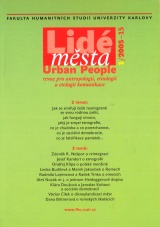Funkce emocí při formování sociálních vztahů
DOI:
https://doi.org/10.14712/12128112.3934Abstrakt
A particular sort of socially oriented emotion is sympathy. If our close one is in a difficult life situation, we feel we should “be with him or her”, share his or her suffering and help with overcoming it. This type of sympathy, however, does not appear in relation to those with whom we have a close relationship, one into which both sides have already invested some energy in the past. If we see a limbless beggar in a street, we also feel sympathy. But we do not commonly seek an object of sympathy. For instance, personal advertisements in a newspaper are not likely to contain: “I am looking for an honest woman in a difficult life situation, who would like to share her anguish with me…” Whereas, it is more typical to find ads looking for a nice, funny and cheerful person with a sense of humour. Nowadays very modern, the concept of biological market and reciprocal altruism is also found in connection with the display of sympathy in humans. Clark mentions the rules for exchanging a display of sympathy (Clark 1987). People believe they have a “right to have sympathy” in case they are troubled. Sympathy should be aimed at those who deserve it, i.e. at those who do not overestimate their needs and have not “caused” the critical situation unto themselves (although that is very subjective). In interactions with a display of pity, the relationship between the “giver” and the “receiver” of sympathy is modified. The receiver should be grateful to the giver and return the favour in the future. However, the larger and more anonymous a social group, the less likely it is to return the acts of altruism. Instead, those are merely received which leads to the parasite strategy (Frynta 1993).
Stahování
Publikováno
Jak citovat
Číslo
Sekce
Licence

Tato práce je licencována pod Mezinárodní licencí Creative Commons Attribution-NonCommercial-NoDerivatives 4.0.


